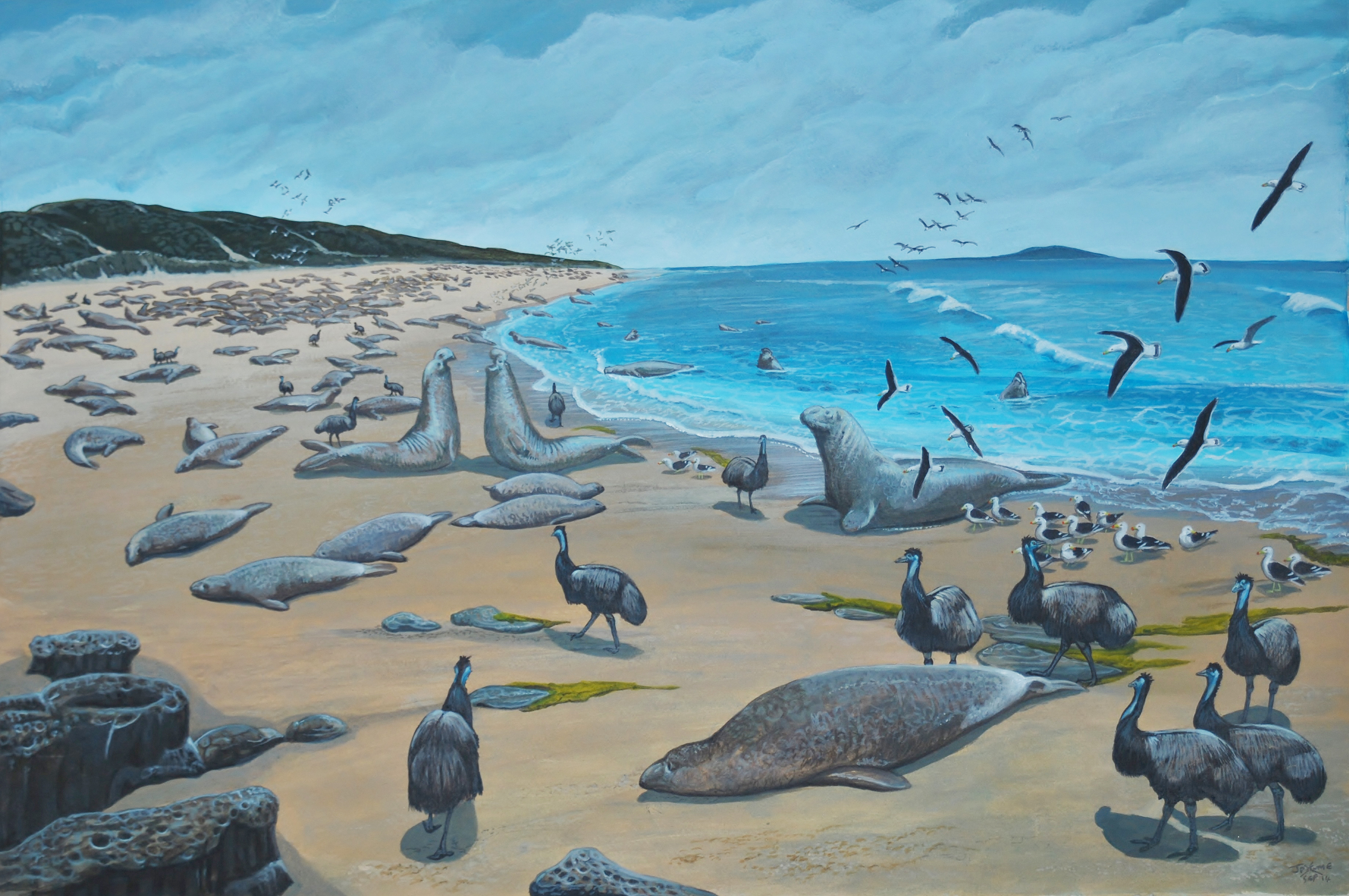Media release
From:
Eggs of extinct dwarf island emus retained large-size
Biology Letters
The southern Australian islands were once home to diminutive subspecies of the mainland emu (Dromaius novaehollandiae), with the Tasmanian emu around 10% less in size, and two dwarf emus, Kangaroo Island emu at 25% smaller, and the King Island emu, the smallest of all emu subspecies, at nearly half the size and weight. Due to limited distribution and small population size, they all became extinct rapidly after discovery by human settlers due to over-hunting, disappearing from King Island by c.1805, with a captive pair surviving in Paris until 1822, from Kangaroo Island by c.1830, and from Tasmania by c.1850. Little was recorded about their life histories, and only a few complete eggs of Tasmanian emu and a unique egg of the Kangaroo Island emu exist. Until recently, the egg of the King Island emu was unknown.
Here we present our discovery in a sand dune of the first known complete egg of the King Island emu, which shows that despite adult birds drastically shrinking in size, all dwarf emus retained large-sized eggs. This was a response to reduced resources and harsh environmental conditions on their respective island homes, where evolution likely favoured larger emu chicks that were relatively mature and mobile at hatching, and could immediately forage for food and maintain body heat to combat cold.
This scenario provides an interesting evolutionary response to insular environmental conditions in dwarf emu breeding strategy, but due to their complete and rapid extinction, the true extent of these adaptations is now impossible to determine.
Multimedia





 Australia; TAS
Australia; TAS



